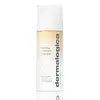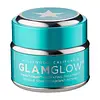What's inside
What's inside
 Key Ingredients
Key Ingredients

 Benefits
Benefits

 Concerns
Concerns

 Ingredients Side-by-side
Ingredients Side-by-side

Butyrospermum Parkii Butter
Skin ConditioningCaprylic/Capric Triglyceride
MaskingC10-18 Triglycerides
EmollientMangifera Indica Seed Oil
EmollientC13-15 Alkane
SolventHydrogenated Olive Oil Stearyl Esters
Emulsion StabilisingJojoba Esters
EmollientLinoleic Acid
CleansingGlyceryl Stearate
EmollientHelianthus Annuus Seed Wax
Skin ConditioningHelianthus Annuus Seed Oil
EmollientTribehenin
EmollientOryza Sativa Bran Extract
Skin ConditioningButyrospermum Parkii Butter Extract
Skin ConditioningHelianthus Annuus Extract
EmollientLavandula Angustifolia Oil
MaskingLavandula Hybrida Oil
EmollientAcacia Decurrens Flower Wax
EmollientRosmarinus Officinalis Leaf Extract
AntimicrobialCitrus Limon Peel Oil
MaskingRosmarinus Officinalis Leaf Oil
MaskingGlycine Soja Oil
EmollientSilica Silylate
EmollientGlycol Distearate
EmollientSalvia Sclarea Oil
MaskingPlankton Extract
Skin ConditioningBixa Orellana Seed Oil
EmollientGlycol Stearate
EmollientHydroxyacetophenone
AntioxidantTocopheryl Acetate
AntioxidantPolyglycerin-3
HumectantTocopherol
AntioxidantWater
Skin ConditioningLinolenic Acid
CleansingOleic Acid
EmollientPalmitic Acid
EmollientStearic Acid
CleansingBehenic Acid
CleansingArachidic Acid
CleansingGondoic Acid
Geraniol
PerfumingCitral
PerfumingLinalool
PerfumingLimonene
PerfumingButyrospermum Parkii Butter, Caprylic/Capric Triglyceride, C10-18 Triglycerides, Mangifera Indica Seed Oil, C13-15 Alkane, Hydrogenated Olive Oil Stearyl Esters, Jojoba Esters, Linoleic Acid, Glyceryl Stearate, Helianthus Annuus Seed Wax, Helianthus Annuus Seed Oil, Tribehenin, Oryza Sativa Bran Extract, Butyrospermum Parkii Butter Extract, Helianthus Annuus Extract, Lavandula Angustifolia Oil, Lavandula Hybrida Oil, Acacia Decurrens Flower Wax, Rosmarinus Officinalis Leaf Extract, Citrus Limon Peel Oil, Rosmarinus Officinalis Leaf Oil, Glycine Soja Oil, Silica Silylate, Glycol Distearate, Salvia Sclarea Oil, Plankton Extract, Bixa Orellana Seed Oil, Glycol Stearate, Hydroxyacetophenone, Tocopheryl Acetate, Polyglycerin-3, Tocopherol, Water, Linolenic Acid, Oleic Acid, Palmitic Acid, Stearic Acid, Behenic Acid, Arachidic Acid, Gondoic Acid, Geraniol, Citral, Linalool, Limonene
Water
Skin ConditioningCaprylic/Capric Triglyceride
MaskingGlycerin
HumectantButylene Glycol
HumectantCyclopentasiloxane
EmollientGlyceryl Polymethacrylate
Pyrus Malus Fruit Extract
Skin ConditioningPEG-8
HumectantGlyceryl Stearate
EmollientPEG-100 Stearate
Cetearyl Alcohol
EmollientSodium Polyacryloyldimethyl Taurate
Emulsion StabilisingSaccharide Isomerate
HumectantCaprylyl Glycol
EmollientOlea Europaea Leaf Powder
AbrasiveAvena Sativa Bran Extract
AbrasiveHydrogenated Polydecene
EmollientPolysorbate 60
EmulsifyingCetyl Alcohol
EmollientZingiber Officinale Root Extract
MaskingMenthoxypropanediol
MaskingHoney
HumectantAminomethyl Propanol
BufferingCamellia Sinensis Leaf Powder
ExfoliatingAcrylates/C10-30 Alkyl Acrylate Crosspolymer
Emulsion StabilisingEthylhexylglycerin
Skin ConditioningTocopheryl Acetate
AntioxidantAllantoin
Skin ConditioningKaolin
AbrasiveHexylene Glycol
EmulsifyingButeth-3
SolventTrideceth-10
CleansingBenzophenone-4
UV AbsorberSodium Benzotriazolyl Butylphenol Sulfonate
UV AbsorberCocos Nucifera Fruit Extract
EmollientSodium Hyaluronate
HumectantAlcohol
AntimicrobialTris(Tetramethylhydroxypiperidinol)Citrate
StabilisingParfum
MaskingCoumarin
PerfumingLinalool
PerfumingTetrahexyldecyl Ascorbate
AntioxidantDisodium EDTA
Sodium Benzoate
MaskingPotassium Sorbate
PreservativePhenoxyethanol
PreservativeWater, Caprylic/Capric Triglyceride, Glycerin, Butylene Glycol, Cyclopentasiloxane, Glyceryl Polymethacrylate, Pyrus Malus Fruit Extract, PEG-8, Glyceryl Stearate, PEG-100 Stearate, Cetearyl Alcohol, Sodium Polyacryloyldimethyl Taurate, Saccharide Isomerate, Caprylyl Glycol, Olea Europaea Leaf Powder, Avena Sativa Bran Extract, Hydrogenated Polydecene, Polysorbate 60, Cetyl Alcohol, Zingiber Officinale Root Extract, Menthoxypropanediol, Honey, Aminomethyl Propanol, Camellia Sinensis Leaf Powder, Acrylates/C10-30 Alkyl Acrylate Crosspolymer, Ethylhexylglycerin, Tocopheryl Acetate, Allantoin, Kaolin, Hexylene Glycol, Buteth-3, Trideceth-10, Benzophenone-4, Sodium Benzotriazolyl Butylphenol Sulfonate, Cocos Nucifera Fruit Extract, Sodium Hyaluronate, Alcohol, Tris(Tetramethylhydroxypiperidinol)Citrate, Parfum, Coumarin, Linalool, Tetrahexyldecyl Ascorbate, Disodium EDTA, Sodium Benzoate, Potassium Sorbate, Phenoxyethanol
Alternatives
Ingredients Explained
These ingredients are found in both products.
Ingredients higher up in an ingredient list are typically present in a larger amount.
This ingredient is an emollient, solvent, and texture enhancer. It is considered a skin-softener by helping the skin prevent moisture loss.
It helps thicken a product's formula and makes it easier to spread by dissolving clumping compounds.
Caprylic Triglyceride is made by combining glycerin with coconut oil, forming a clear liquid.
While there is an assumption Caprylic Triglyceride can clog pores due to it being derived from coconut oil, there is no research supporting this.
Learn more about Caprylic/Capric TriglycerideGlyceryl Stearate is a mix of glycerin and stearic acid.
It is used to stabilize the mixing of water and oil ingredients. By preventing these ingredients from separating, it can help elongate shelf life. It can also help thicken the product's texture.
As an emollient, it helps soften skin and supports barrier-replenishing ingredients.
In cosmetics, Glyceryl Stearate is often made from vegetable oils or synthetically produced.
This ingredient may not be fungal-acne safe
Fun fact: The human body also creates Glyceryl Stearate naturally.
Learn more about Glyceryl StearateLinalool is a fragrance and helps add scent to products. It's derived from common plants such as cinnamon, mint, citrus, and lavender.
Like Limonene, this ingredient oxidizes when exposed to air. Oxidized linalool can cause allergies and skin sensitivity.
This ingredient has a scent that is floral, spicy tropical, and citrus-like.
Learn more about LinaloolTocopheryl Acetate is AKA Vitamin E. It is an antioxidant and protects your skin from free radicals. Free radicals damage the skin by breaking down collagen.
One study found using Tocopheryl Acetate with Vitamin C decreased the number of sunburned cells.
Tocopheryl Acetate is commonly found in both skincare and dietary supplements.
Learn more about Tocopheryl AcetateWater. It's the most common cosmetic ingredient of all. You'll usually see it at the top of ingredient lists, meaning that it makes up the largest part of the product.
So why is it so popular? Water most often acts as a solvent - this means that it helps dissolve other ingredients into the formulation.
You'll also recognize water as that liquid we all need to stay alive. If you see this, drink a glass of water. Stay hydrated!
Learn more about Water